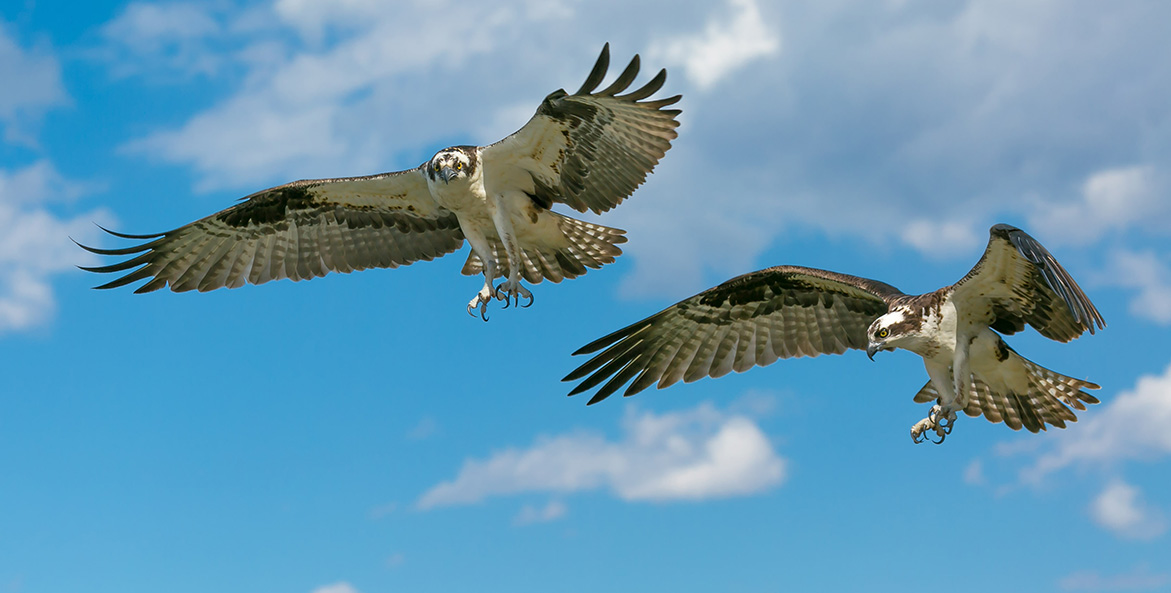An oyster farmer in the south of France last summer spoke to the news about a marauding invasive species that he likened to “serial killers,” eating anything that swam or crawled. The species in question? Callinectes sapidus, the same Atlantic blue crab that is so beloved in the Chesapeake. It’s just another twist in the complicated saga of blue crabs. While the latest survey shows the crabs are still struggling in the Bay (despite this, Virginia regulators just this week opened the door to a controversial reopening of the winter crab harvest), they are becoming a menace in new waterways from Maine to Croatia. They aren’t the only Chesapeake Bay species causing concern. Ospreys are in trouble, reaching their lowest level in parts of the Bay region since the DDT era, a decline thought to be linked to a lack of menhaden. Striped bass are also feeling the heat—a problem anglers can help solve by targeting other fish species during the hot summer months. And in Pennsylvania, blue catfish pose a conundrum as managers in the western part of the state seek to restore the species in its native range, while preventing an invasion in the Susquehanna. Also, this month, we cover the marvelous world of macroinvertebrates, the latest dead zone forecast, the likelihood of meeting the 2025 goals for oyster restoration, and more.
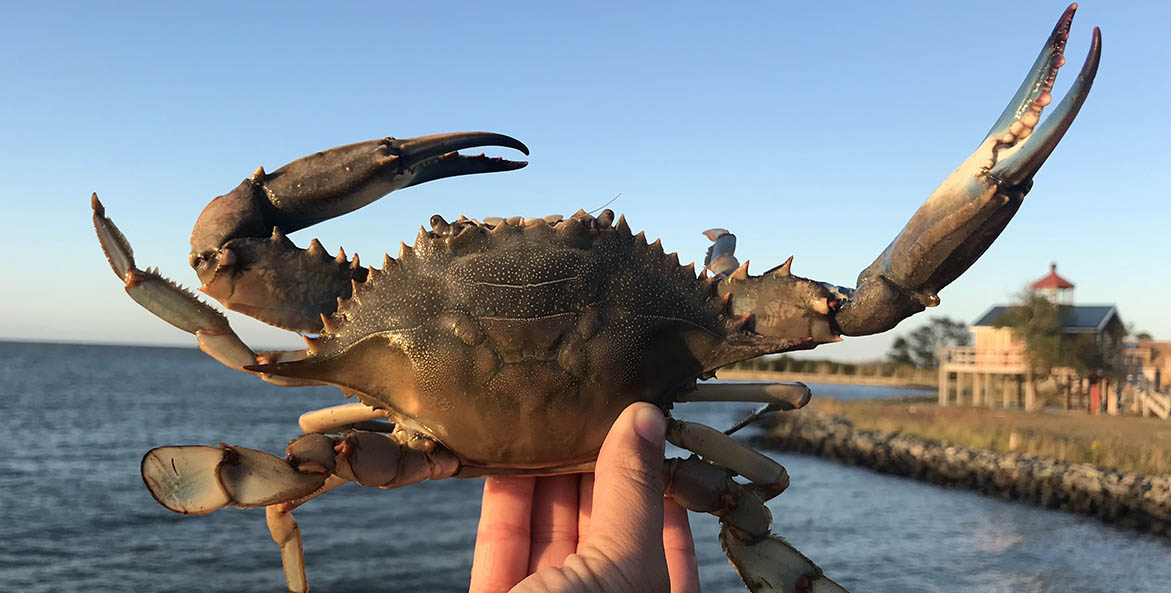
A prized blue crab near Port Isobel Island, Virginia.
Morgan Jones/CBF Staff
Bonjour Blue Crabs
Concerns remain about the overall decline in blue crabs after the annual survey of the population in the Chesapeake Bay and its tributaries was released late last month. But while the survey showed numbers remain low here, this iconic Bay species is showing up in wildly unexpected places across the globe—including France, Croatia, and Maine.
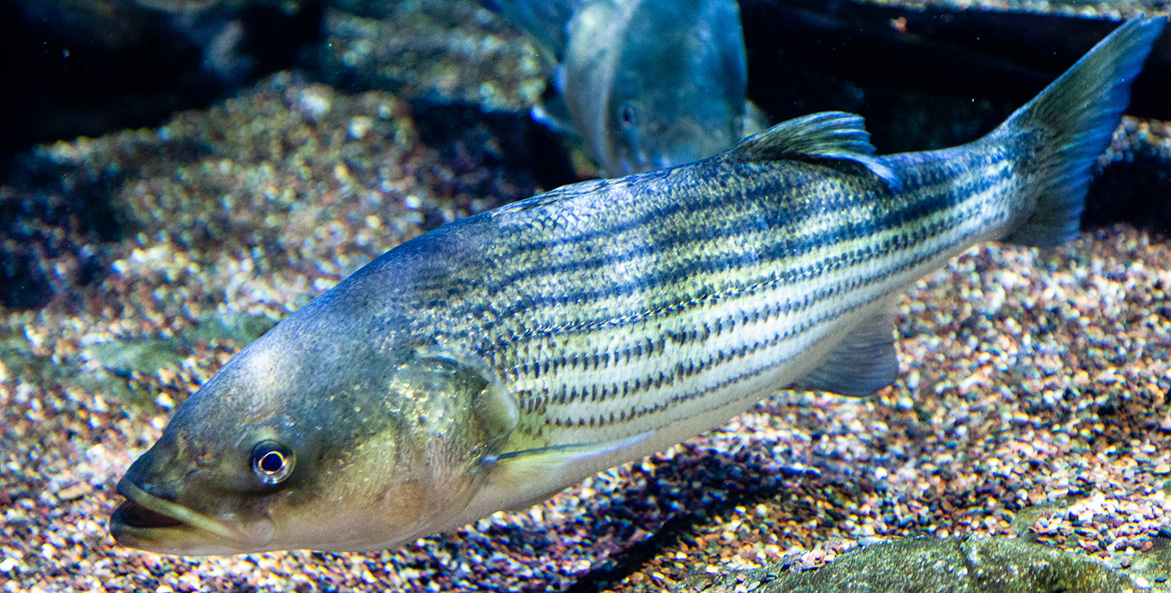
Striped bass, also know as rockfish.
Joan Smedinghoff/Chesapeake Bay Program
A Summer Vacation for Striped Bass
Recent years have seen troubling trends for striped bass. While there are many reasons, the most immediate way to help the fish is by changing fishing habits, argues CBF Maryland Executive Director Allison Colden. That means giving stripers a summer break, especially when hot days make the fish more likely to die after being caught and released.
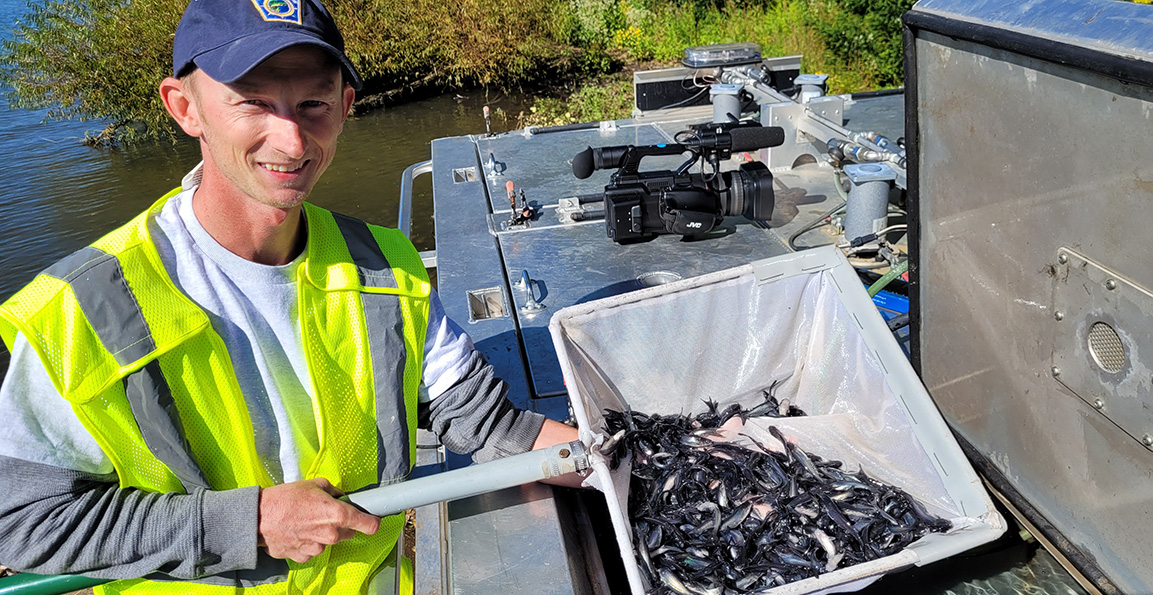
Pennsylvania Fish & Boat Commission Fish Culturist Andy Severns prepares to stock blue catfish fingerlings into the Ohio River near Point State Park in Pittsburgh.
Pennsylvania Fish & Boat Commission
Blue Catfish Conundrum
Invasive blue catfish, an opportunistic predator, continue to eat the Chesapeake Bay alive—feeding on valuable species like menhaden, striped bass, eel, shad, river herring, and blue crabs. But in western Pennsylvania, where blue catfish are native to the Ohio River Basin, the fish are seen as a prized opportunity for anglers, and reintroduction plans are underway.
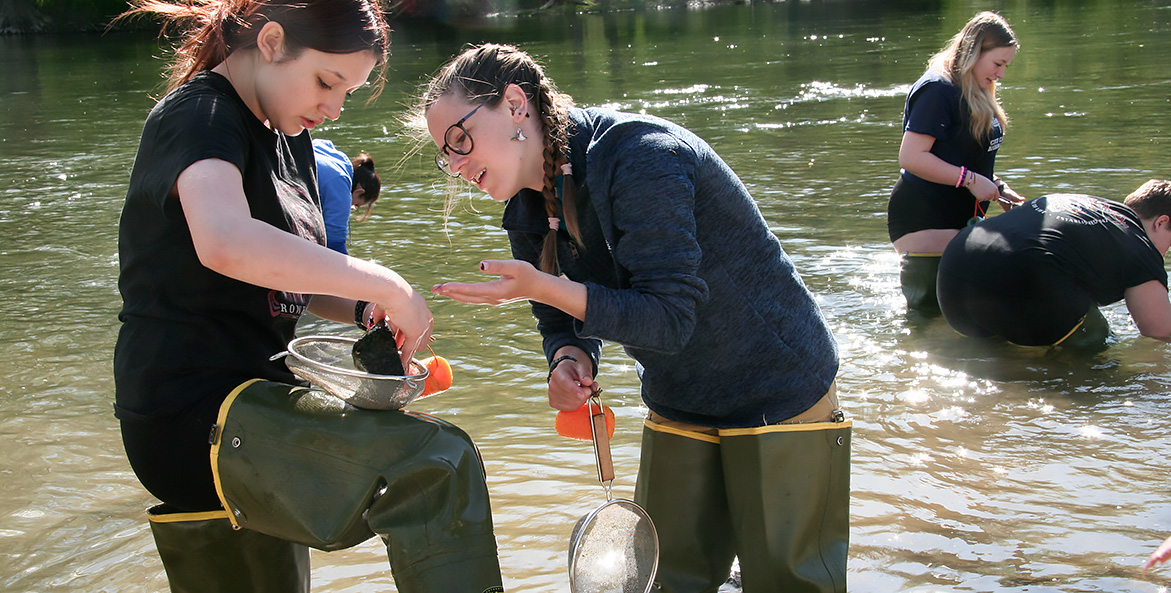
Students participating in a CBF Education program disturb the streambed with their feet to capture macros, which flow into strainers.
BJ Small/CBF Staff
Marvelous Macros
Below the surface of our rivers and streams is a bug’s world that is trying to tell us something. Macroinvertebrates, or “macros”—with catchy names like hellgrammite, dragonfly, and water penny beetle—play many important roles within the aquatic ecosystem. They are also incredibly sensitive to human-influenced changes, making them an important indicator of water quality and overall stream health.
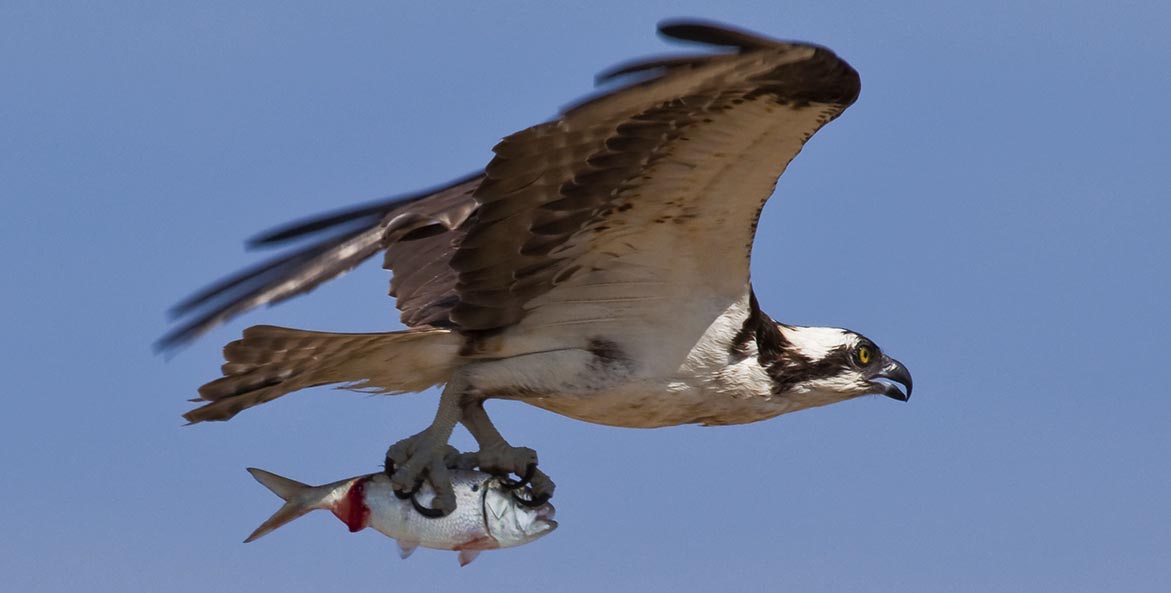
An osprey carries a freshly caught menhaden, a prime food source for many birds and larger fish in the Chesapeake Bay.
iStock
The Osprey Garden at Risk
In the 1960s and ‘70s, osprey almost entirely disappeared from the Bay region due to the insecticide DDT. Now, in one part of the Bay, osprey have dropped to even lower levels than the DDT era. The suspected culprit this time around? The lack of menhaden—a foundational fish that is critical food for a number of important species.
In the News
- Oyster restoration in Chesapeake Bay expected to meet 2025 goal: The goal to restore healthy oyster reefs in 10 Bay tributaries is on track to meet a 2025 deadline, with eight out of ten rivers complete.
- Chesapeake Bay dead zone predicted to be slightly larger than average: The low-oxygen dead zone in the Bay, which is linked to weather patterns and the amount of pollution entering the water, is only expected to be 4 percent larger than average despite 23 percent higher-than-average precipitation this year.
- Leaders seek solutions to protect Tangier Island from climate change: Federal, state, and local officials visited Tangier on May 30 to discuss a resilience plan for the island, which has lost about two-thirds of its land to sea level rise and erosion since the 1850s and could lose much of the rest within 50 years.
- Virginia opens winter blue crab harvest despite opposition: State regulators narrowly approved reopening the winter season after a 15-year closure, subjecting the vulnerable keystone species to additional harvest.
- South Baltimore advocates file civil rights complaint on incinerator pollution threats: South Baltimore Community Land Trust, represented by CBF and Environmental Integrity Project, filed a Title VI complaint stating that the city’s Department of Public Works failed to adequately plan a transition away from a highly polluting municipal waste incinerator.
- Maryland students explore climate change and resilience firsthand in Annapolis: A pilot partnership between CBF and several public school systems seeks to incorporate climate literacy and outdoor learning into curriculum to help prepare students for a changing future and find local solutions.
- Extreme rainfall in Pennsylvania will increase, new report finds: The report by science communication group Climate Central suggests that the devastation from extreme rain events that claim lives, cause billions of dollars in damage, and pollute local waters will become more severe thanks to climate change.
What You Can Do
- More than 3,000 species of plants and animals call the Chesapeake home. Join us in pledging to restore and protect the Bay's iconic wildlife such as blue crabs, oysters, mussels, and Atlantic menhaden.
- Save the Bay in style this summer! Shop the CBF Store for all your summer essentials, from beach towels to bucket hats and more.
- Match Expiring: Your gift to save the Bay is now worth TRIPLE thanks to a generous matching gift from our friends at The Orokawa Foundation—but only through midnight June 30! Give today and your donation will go three times as far.
If you would like to receive these periodic updates directly to your email, sign up for our Save the Bay newsletter!

